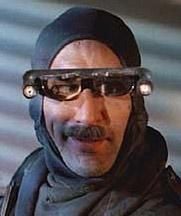

There is likely a lot of US tech in that chip. TSMC is just a fab, they don’t have a lot of their own technology, they buy thousands of pieces of tech from all over the world to make their chips. A lot of that comes from the US.


There is likely a lot of US tech in that chip. TSMC is just a fab, they don’t have a lot of their own technology, they buy thousands of pieces of tech from all over the world to make their chips. A lot of that comes from the US.


If they are using GPL code, shouldn’t they also release their source code?


Seems to project weakness more than strength when the world’s second nuclear power isn’t even sure if it’s ICBMs work.


See my post above in the thread where I show the laws I am talking about and cite source.


See my post above with citation.


This article summarizes the subsidies I’m talking about. Here’s an excerpt:
For now, the important point is that trucks generally are more profitable than cars thanks to two big government incentives, both of them historical footnotes.
The first is the so-called chicken tax, a 25 percent tariff imposed by Lyndon B. Johnson in 1964 on foreign-built work vehicles as part of a chicken-related trade war with Europe. If you’re making a pickup or cargo van in the United States, profits should be higher, because foreign factories can’t come close to undercutting you on price.
The second incentive lies in the fine print of Corporate Average Fuel Economy (CAFE) standards adopted in 1975, Gerald Ford’s reluctant response to a crippling Middle East oil embargo that sent gas prices soaring. To protect American commerce, work trucks and light trucks were subject to less-strict CAFE standards than family sedans. Trucks are also exempt from the 1978 gas guzzler tax, which adds $1,000 to $7,700 to the price of sedans that get 22.5 or fewer miles to the gallon.


That’s because the USA subsidizes bigger trucks as “work vehicles”. This practice needs to stop and they need to be taxed more than smaller vehicles.


Until his profile gets high enough that they find some permit he doesn’t have and he gets shut down.


I was working tech in the Bay Area in the '90s, I remember it well.


Probably you are right, but so far no one has demonstrated any LLM that can be controlled within these tight types of adjustments and it feels like it might be something that the technology just never is able to do. We might have to wait for a whole new generation of technology for this.


It will be really interesting to see how long it actually takes before this can be done accurately enough to execute a directors vision and high quality enough to actually make a film from. It could be anything from a few months to decades, it’s so hard to know how much we are actually able to control these models to get them to do what we really want accurately enough.


This would really be the ultimate fuck you to everyone if they did this. I sort of wish they would so we’d all stop giving them all our personal data.


Not clear from this what the difference is between a TPU and an LPU.


Yes, however recruiters see someone like this and see a great opportunity to fill their quota, so it all balances out.


There are daily updates on many channels on YouTube if you want to keep up.


Goody for you


I prefer it too, but if something works well and saves me time and effort for $2, I don’t make a big deal out of it. I also need to accomplish things other than monkeying around with my computer.


It has had such a massive positive effect on my life relative to the price.


I’ve used them all (probably 20+ different OS’ in my lifetime), and they all have a place. I use Windows, MacOS, and Linux daily, each for what they are good at. Maybe people should use what works best for them?
I’m sure TSMC would become untenable if either the US stopped buying or selling to them, though I tend to disagree and think that not licensing US tech would kill them faster. I’m pretty sure that much of that tech is not available from anywhere else and would just cause a full stop of their business, at least for some time. It’s easier to survive on lower revenue than it is on a fully shuttered assembly line.